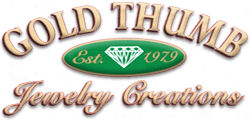Diamonds 101: Introduction to Diamond Shape
We’ve talked before about a lot of important decisions you need to make when choosing a diamond, from deciding on a carat weight to understanding its cut. Each of these technical choices are crucial for your diamond to last the longest and look the best.
Now, you’re at the stage where have to pick which shape you want your diamond to be. While you may think it hardly matters outside of personal preference, remember that not all diamonds are created equal. Depending on which precious stone you’re thinking of buying, each one has characteristics that can be strengthened by its shape.
Let’s take a look at the 10 most popular diamond shapes and determine which one is best for your diamond.
Round
The round brilliant cut is easily the most popular shape of diamond in history. For hundreds of years, this has been the go-to cut for diamond cutters across the globe, making it both instantly recognizable and absolutely timeless. Over time, diamond cutters have mathematically calculated ways of perfecting this shape, boosting the brilliance, fire, and overall sparkle of many diamonds.
Asscher
Considered by many to be a softer version of the emerald cut, Asscher is most well-known for its trademark hallway of reflective mirrors, amplifying its brilliance. This is a particularly vintage cut, gaining popularity during the Roaring 20s.
Cushion
Another classic shape from diamond cutter history, the cushion cut is also one of the most customizable. Depending on personal preference, a cushion cut diamond can be either rectangular or more square. Its rounder corners and larger facets make this shape most well-known for its clarity and brilliance.
Emerald
An emerald cut is a very popular shape due to how understated it can look. Its less fiery appearance showcases the clarity of the original diamond, which allows for its large rectangular table to look more classy instead of gaudy.
Heart
While similar to the pear cut, heart cut diamonds also sport two rounded edges and a cleft at the top to give them the appearance of their namesake. This shape – again, similar to the pear – allows for maximum brilliance of a diamond, making it particularly popular today. That being said, symmetry is crucial, requiring impeccable skill from a cutter to get right.
Marquise
Another vintage shape that gained popularity in the 70s, the marquise cut still has a lot to offer today. Due to its elongated shape, a Marquise diamond will look larger than a rounder diamond of the same carat. If worn on a ring, it can also make a wearer’s fingers look longer and more elegant.
Oval
One of the most popular shapes for engagement rings, the oval cut is similar to the marquise in that it enhances carat weight to look larger in person. Due to the rounder shape, however, oval cut diamonds offer much more brilliance than their sharper counterpart.
Pear
Combining the best traits of marquise and the round shapes, the pear cut is one of the most exceptional shapes you can find when shopping for a diamond. Due to its more slender shape, it’s capable of giving hands a slimmer appearance when worn on a ring. They’re also cut to produce the most brilliance out of a diamond; like the heart cut, however, symmetry is very important.
Princess
One of the more contemporary shapes on this list, the princess cut features a variety of intricate facets that allow for a particularly high degree of sparkle. Due to its sharp corners and how it’s cut, the diamond’s color is amplified throughout the entire shape, making it very popular with modern women.
Radiant
While it’s one of the more recent shapes to come on the market, the radiant cut has quickly become one of the most popular due to being a gorgeous hybrid of the round and emerald Cuts. Its complex facets allow for stunning brilliance, and its shape makes it perfect to combine with other diamonds, as well.
Expert Diamond Selection in Frederick, MD
Ready to start the adventure of picking out the perfect stone? Contact the professionals at Gold Thumb Jewelry; we are excited to help you begin!

